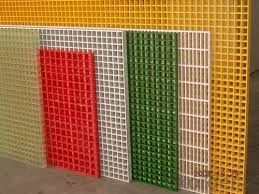
-
 Afrikaans
Afrikaans -
 Albanian
Albanian -
 Amharic
Amharic -
 Arabic
Arabic -
 Armenian
Armenian -
 Azerbaijani
Azerbaijani -
 Basque
Basque -
 Belarusian
Belarusian -
 Bengali
Bengali -
 Bosnian
Bosnian -
 Bulgarian
Bulgarian -
 Catalan
Catalan -
 Cebuano
Cebuano -
 China
China -
 China (Taiwan)
China (Taiwan) -
 Corsican
Corsican -
 Croatian
Croatian -
 Czech
Czech -
 Danish
Danish -
 Dutch
Dutch -
 English
English -
 Esperanto
Esperanto -
 Estonian
Estonian -
 Finnish
Finnish -
 French
French -
 Frisian
Frisian -
 Galician
Galician -
 Georgian
Georgian -
 German
German -
 Greek
Greek -
 Gujarati
Gujarati -
 Haitian Creole
Haitian Creole -
 hausa
hausa -
 hawaiian
hawaiian -
 Hebrew
Hebrew -
 Hindi
Hindi -
 Miao
Miao -
 Hungarian
Hungarian -
 Icelandic
Icelandic -
 igbo
igbo -
 Indonesian
Indonesian -
 irish
irish -
 Italian
Italian -
 Japanese
Japanese -
 Javanese
Javanese -
 Kannada
Kannada -
 kazakh
kazakh -
 Khmer
Khmer -
 Rwandese
Rwandese -
 Korean
Korean -
 Kurdish
Kurdish -
 Kyrgyz
Kyrgyz -
 Lao
Lao -
 Latin
Latin -
 Latvian
Latvian -
 Lithuanian
Lithuanian -
 Luxembourgish
Luxembourgish -
 Macedonian
Macedonian -
 Malgashi
Malgashi -
 Malay
Malay -
 Malayalam
Malayalam -
 Maltese
Maltese -
 Maori
Maori -
 Marathi
Marathi -
 Mongolian
Mongolian -
 Myanmar
Myanmar -
 Nepali
Nepali -
 Norwegian
Norwegian -
 Norwegian
Norwegian -
 Occitan
Occitan -
 Pashto
Pashto -
 Persian
Persian -
 Polish
Polish -
 Portuguese
Portuguese -
 Punjabi
Punjabi -
 Romanian
Romanian -
 Russian
Russian -
 Samoan
Samoan -
 Scottish Gaelic
Scottish Gaelic -
 Serbian
Serbian -
 Sesotho
Sesotho -
 Shona
Shona -
 Sindhi
Sindhi -
 Sinhala
Sinhala -
 Slovak
Slovak -
 Slovenian
Slovenian -
 Somali
Somali -
 Spanish
Spanish -
 Sundanese
Sundanese -
 Swahili
Swahili -
 Swedish
Swedish -
 Tagalog
Tagalog -
 Tajik
Tajik -
 Tamil
Tamil -
 Tatar
Tatar -
 Telugu
Telugu -
 Thai
Thai -
 Turkish
Turkish -
 Turkmen
Turkmen -
 Ukrainian
Ukrainian -
 Urdu
Urdu -
 Uighur
Uighur -
 Uzbek
Uzbek -
 Vietnamese
Vietnamese -
 Welsh
Welsh -
 Bantu
Bantu -
 Yiddish
Yiddish -
 Yoruba
Yoruba -
 Zulu
Zulu
frp dual layer composite product
Understanding FRP Dual Layer Composite Products
Fiber Reinforced Polymer (FRP) dual layer composite products have gained significant attention in various industries due to their remarkable mechanical properties and versatility. These advanced materials, which combine the lightweight characteristics of polymers with the strength of reinforced fibers, are transforming applications ranging from construction to aerospace and automotive sectors.
Understanding FRP Dual Layer Composite Products
One of the primary advantages of FRP dual layer composites is their impressive strength-to-weight ratio. Unlike traditional materials such as steel and concrete, FRP composites are significantly lighter, which leads to reduced transportation costs and improved fuel efficiency in automotive and aerospace applications. This reduction in weight does not compromise strength; indeed, many FRP products exhibit higher tensile and compressive strength compared to conventional materials.
frp dual layer composite product

Moreover, the dual-layer design enables engineers to tailor the properties of each layer for specific requirements. For instance, the inner layer can be engineered for optimal load-bearing capabilities, while the outer layer can be designed to enhance resistance to environmental factors, such as UV radiation, moisture, and temperature fluctuations. This customization allows for the development of specialized products such as marine vessels, wind turbine blades, and bridge components that endure extreme conditions.
The longevity and durability of FRP dual layer composites are also noteworthy. With their inherent resistance to corrosion, these materials are often preferred in applications where traditional materials would succumb to degradation over time. This durability translates into lower maintenance costs and extended service life, making FRP composites a cost-effective option in the long run.
Furthermore, the manufacturing processes for these composites have become increasingly sophisticated. Techniques such as resin transfer molding (RTM) and vacuum-assisted resin infusion are employed to optimize production efficiency and ensure consistent quality. These methods allow for the production of complex shapes, thereby expanding the potential applications of FRP dual layer composites across various industries.
In conclusion, FRP dual layer composite products represent a significant advancement in material science, offering a unique combination of strength, lightweight characteristics, and durability. As industries continue to seek innovative solutions to meet performance and efficiency standards, the demand for these composites is likely to grow. Their versatility and adaptability position them as a crucial component in the development of sustainable and high-performance products for the future. Investing in FRP technology today not only leads to improved functionality but also paves the way for greener manufacturing processes and reduced environmental impacts.









